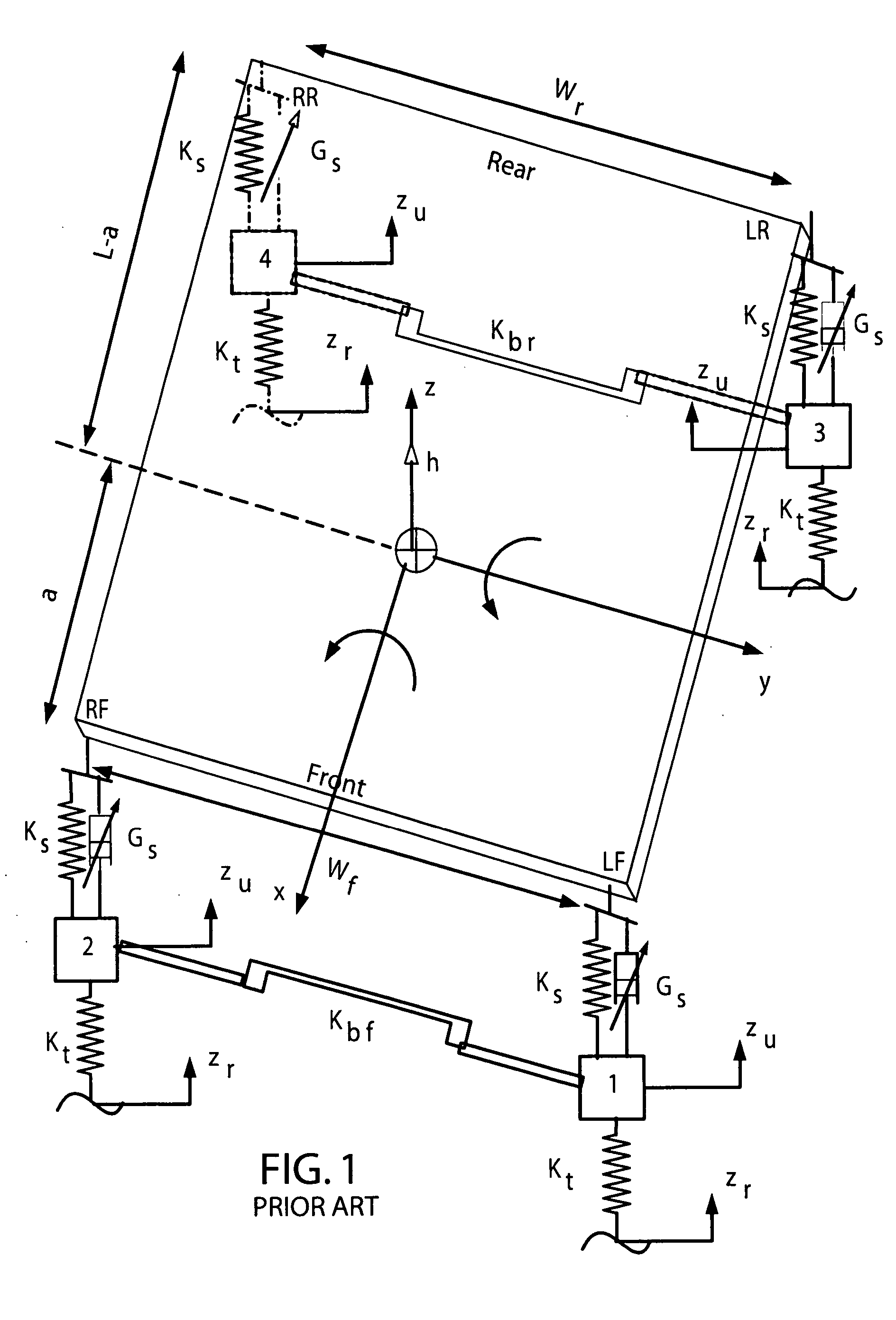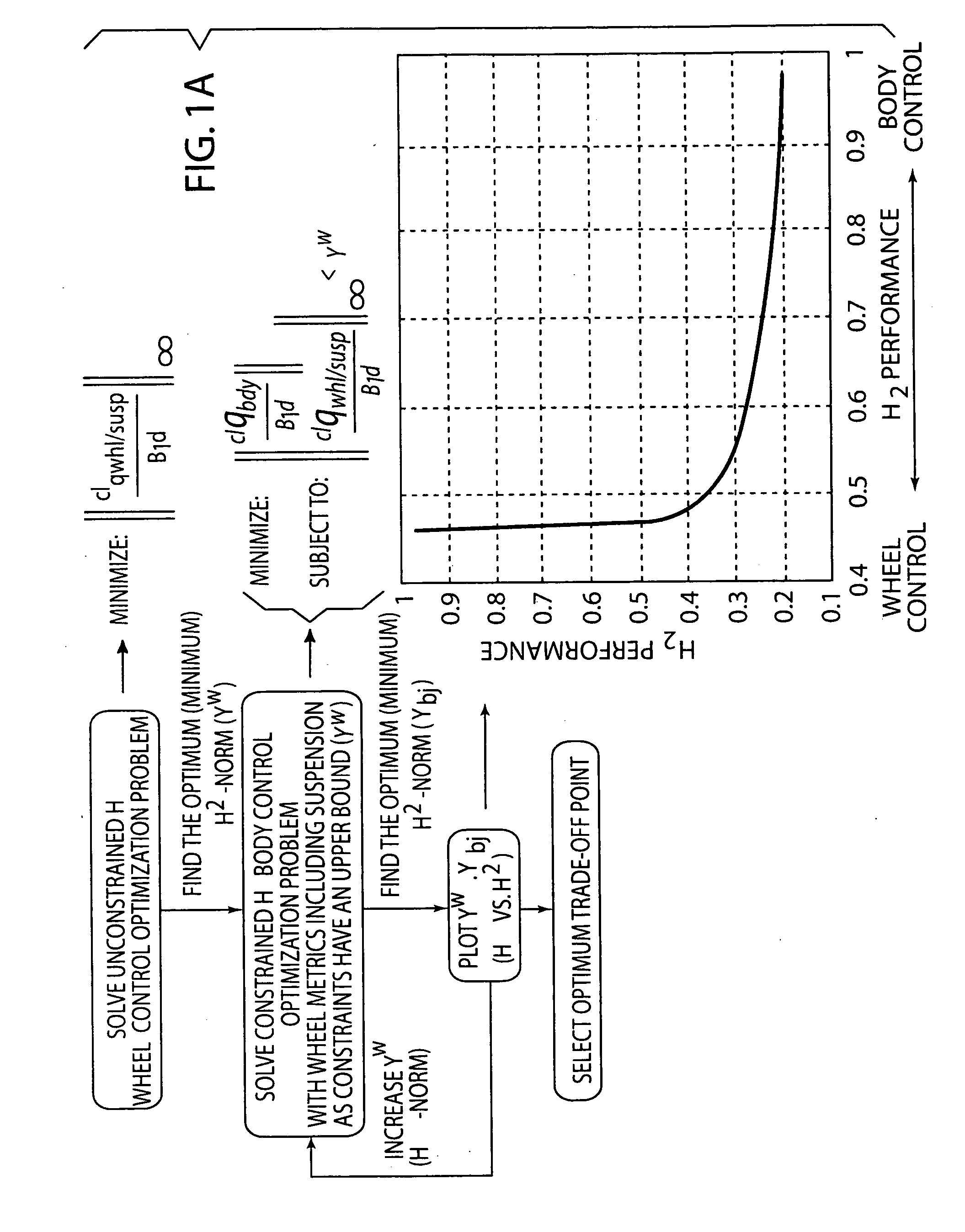Frequency-weighted vehicle suspension control
a vehicle suspension and frequency-weighted technology, applied in the field of frequency-weighted vehicle suspension control, can solve the problems of poor normal ride comfort, conflicting dual objectives of maximizing ride comfort and handling, and vehicle handling suffering
- Summary
- Abstract
- Description
- Claims
- Application Information
AI Technical Summary
Benefits of technology
Problems solved by technology
Method used
Image
Examples
example
[0074] Referring to FIG. 1, the following parameters have been used for the vehicle model to demonstrate the simulation results presented in this section: sprung mass (ms)=1528 kg, front unsprung mass (muf)=111 kg, rear unsprung mass (mur)=141 kg, roll moment of inertia (Ixx)=515 kg.m2, pitch moment of inertia (Iyy)=2853 kg.m2, tire stiffness (Kt)=240.5 kN / m, front spring stiffness (Ksf)=30.6 kN / m, rear spring stiffness (Ksr)=26 kN / m, front roll bar stiffness (Kbf)=27.3 kN / m, rear roll bar stiffness (Kbr)=10 kN / m, wheelbase (L)=2.9 m, track width (wf,r)=1.5 m, c.g. distance behind front axle (a)=1.3 m, roll center height (hf,r): front=0.11 m; rear=0.13 m, c.g. height (hcg)=0.6 m; open-loop damping (Gop): front=300 N / mis: rear=150 N / m / s, passive damping (Gp): front=2.2 kN / m / s; rear=1.4 kN / m / s.
[0075] The synthesis procedure described above is utilized to solve an unconstrained wheel control problem by minimizing the H∞-norm of the metrics. The optimal solution (γω) for this example i...
PUM
 Login to View More
Login to View More Abstract
Description
Claims
Application Information
 Login to View More
Login to View More - R&D
- Intellectual Property
- Life Sciences
- Materials
- Tech Scout
- Unparalleled Data Quality
- Higher Quality Content
- 60% Fewer Hallucinations
Browse by: Latest US Patents, China's latest patents, Technical Efficacy Thesaurus, Application Domain, Technology Topic, Popular Technical Reports.
© 2025 PatSnap. All rights reserved.Legal|Privacy policy|Modern Slavery Act Transparency Statement|Sitemap|About US| Contact US: help@patsnap.com



